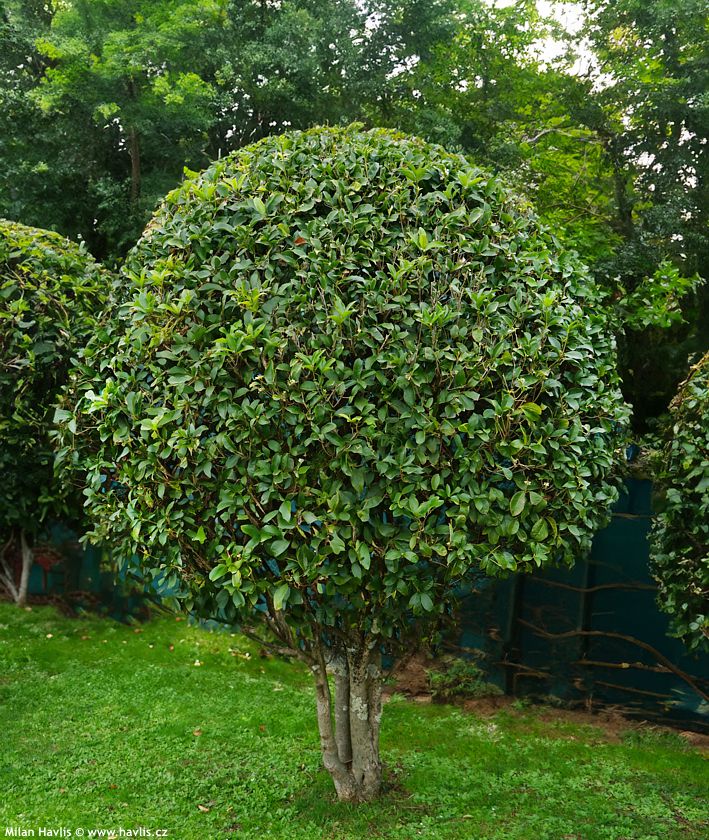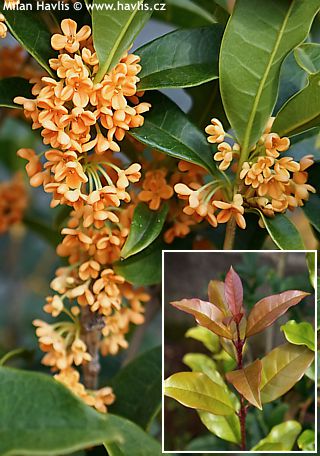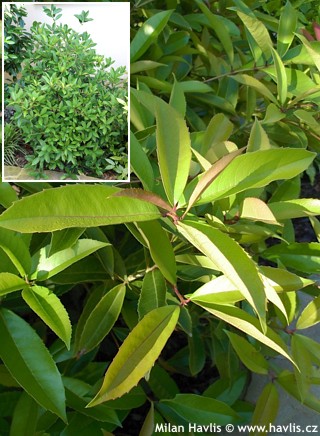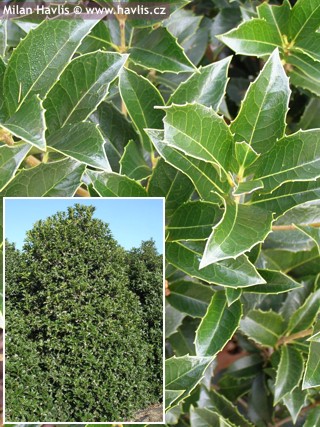Osmanthus fragrans Fragrant olive, sweet olive, sweet tea


Osmanthus
Osmanthus is a genus of only about 15-20 evergreen species and varieties, and a genus which I fell in love with the first time I saw a few plants of. Their leathery and sometimes spiny leaves resemble hollies but osmanthus plants have something extra which gave them their name derived from Greek: osme = fragrance and anthos = flower. Osmanthus has tiny but highly fragrant flowers. I was an amateur when I bought the first plants and I had no idea that in all encyclopedias they were rated too tender for our C.E. climate. And since I never knew I put them to my garden. And after some 15 years of growing I can assure you that all of them not only survived even the worst winter of 2006/2007, they thrive and some of them are taller than me and I am very close to 2m. Including the most tender one o.fragrans. I keep on trialling more species and varieties because I noticed that they have some genetic predisposition for extreme drought tolerance in summer and some are even happy with dry soil in winter. And with current lack of precipitation, we will need more of drought-tolerant plants.It grows into a medium-sized to large, upright shrub with smooth, gray branches. With age, its shape gets more rounded, forming a widely oval habit. It can be pruned or trimmed in any way, preferably in the spring after frost. Summer trimming is not recommended due to presence of late summer flower buds. Use it as a unique specimen shrub, in a mixed bed, or in an evergreen hedge combined with other evergreen shrubs of different features. Sweet olive is a long-lived shrub or small tree, a specimen is known to have lived for over 1200 years.
Grow osmanthus in moist but well-drained, humus rich, preferably acidic soil. Provide plenty of mulch for winter to protect the roots from fast freezing. It loves full sun but in colder regions find it a location sheltered from late winter and early spring sunlight but with plenty of light during the growing season. Use only plants with mature wood in zone 7 and transplant it no later than late summer in order to avoid frost damage after the first winter. Soi far we have tested its hardiness down to -17 °C without significant damage (USDA zone 7), only with some sunscorch after its first winter. Further trials continue. Young plants with immature wood must overwinter indoors until they have hardened up. Sweet olive does not suffer from diseases, but vine weevil can be a problem.
Last update 05-02-2024
Goods are shipped all over Europe. For Russia and U.K. and for further details please read about SHIPPING OPTIONS HERE.
Are you interested in a serious discount for orders NOV-FEB? Check your options here.
THE PRICES INCLUDE VAT of 15%. For quick conversion you can use 1 CZK = approx. 0.04 EUR
- STANDARD QUALITY - Plants of this group are 1st class quality with number of branches and overall density adequate to their size and age, considering they were container grown.
- DE LUXE QUALITY - This label guarantees a luxurious quality of manually selected plants that, compared to their height and age, are exceptionally dense and beautiful.
- EXTRA - These plants are usually mature and bigger specimens with exceptional overall appearance.
- STANDARD (as described in the plant form) means a tree with a trunk of 190-210 cm and a crown at the top, unless specified differently. The commercial size for trees is their girth measured in the height of 1m from ground.
- HOBBY - These plants are of the same quality as our standard-quality plants but younger and therefore cheaper.
- SHRUB - a woody plant with branches growing bushy from the ground level.
- HALF-STANDARD or MINI-STANDARD - a small tree with shorter trunk, its size is usually specified.
- FEATHERED - These are trees with branches growing already from the base of the trunk and up along the stem.
- GRASSES and PERENNIALS - Sizes given usually read the diameter of the pot or the clump, as specified.



















